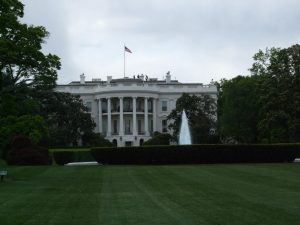Ways to Remove a President from Office

Only a few times in U.S. history has an attempt been made to remove a president from office. It is an uncommon act for Congress to undertake due to the extraordinary burden of proof necessary to prove wrongdoing. Article 2.4 of the Constitution of the United States spells out the circumstances for the articles of impeachment to be issued as: “treason, bribery, or other high crimes and misdemeanors.”
These terms are rather broad and unspecific. To clarify, legal scholar Ronald Arthur Lowry states four interpretations that lead to ways to remove a president from office.
Congressional Interpretation
Articles 1.2 and 1.3 of the Constitution grant powers to the House of Representatives and the Senate, respectively, to issues articles of impeachment. Congress has the ability to interpret the evidence and collectively decide if impeachment proceedings are necessary.
“The only honest answer is that an impeachable offense is whatever a majority of the House of Representatives considers it to be at a given time in history; conviction results from whatever offense or offenses two-thirds of the body considers to be sufficiently serious to require removal of the accused from office…” said Congressman Gerald Ford in 1970.
The last time this occurred was the attempted impeachment of John Tyler in 1842. He vetoed a bill and angered lawmakers who then attempted impeachment as retribution. The attempt failed.
In exploring ways to remove a president from office, this is the least common application of Article 2.4. The application of this interpretation would mean that the president is serving at the pleasure of Congress.
An Indictable Crime
The second view is based on the interpretation that Article 2.4 relates to an indictable crime that must be present. Article 3.2 section 3 confirms the idea that the Constitution views impeachment as a criminal offense and “the trial of all crimes, except in cases of impeachment, shall be by a jury.”
President Richard Nixon fell into this category and it is believed by U.S. politics expert Tom Murse that if it was not for Nixon’s resignation, he certainly would have been impeached because of indictable crimes relating to the Watergate scandal.
Misdemeanor
The third perspective is what many legal scholars deem the most applicable. The perspective is that when exploring ways to impeach, only a misdemeanor offense is necessary to initiate proceedings. The original wording of Article 2.4 was “treason, bribery, or corruption.”
Corruption was eventually removed and replaced with “high crimes and misdemeanors.” When the Constitution was ratified, the term misdemeanor had no criminal connotation. According to Lowry, that is what makes this the most popular application of Article 2.4.
Relating to the President’s Official Duties
The last interpretation states that no indictable crime needs to be present. The impeachable offense can be a “bad act or may not be a crime but it would be more serious than simple maladministration.”
A successful impeachment has never occurred in the U.S., and Murse believes the reason for this is that it is a huge political undertaking for Congress. It needs to consider both the extraordinary burden of proof and the consequences that will come as a result of removing a democratically elected president.
However, it is through the above four interpretations that Congress can identify the ways to remove a president from office.
– Brian Faust
Photo: Flickr
